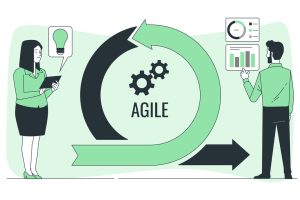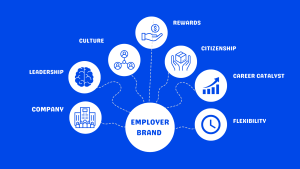Trends of Staff Augmentation and Hiring Landscape
Introduction The world of work is rapidly evolving. Technology, globalisation, and changing workforce expectations are disrupting traditional hiring practices. Companies are r...

Introduction
The world of work is rapidly evolving. Technology, globalisation, and changing workforce expectations are disrupting traditional hiring practices. Companies are rethinking their strategies to stay competitive. In this environment, staff augmentation has become a key solution. It addresses talent gaps, increases agility, and meets dynamic business needs.
This article examines the trends impacting staff augmentation and hiring. It also provides practical insights for organisations looking to adapt effectively.
Rise of Remote Work
Remote work has changed the way companies operate. Flexible work schedules are no longer a luxury – they have become a necessity. Employees now expect to be able to work from anywhere in the world. This shift has significantly impacted hiring practices.
Remote work allows companies to access a global talent pool. Geographical barriers are no longer a limitation. Staff augmentation partners are taking advantage of this trend. They provide organisations with access to skilled professionals from different regions. Moreover, remote collaboration tools make managing augmented teams easier than ever.
However, this change also brings challenges. Companies must prioritise clear communication, trust, and cultural fit. Building strong relationships in a remote environment is critical to success.

Increasing Demand for Specialised Skills
As technology evolves, so do the skills businesses require. Emerging technologies such as artificial intelligence, blockchain, and cloud computing demand niche expertise. However, finding professionals with these specialised skills can be difficult.
Staff augmentation helps address this gap. By partnering with talent providers, companies can quickly onboard experts for specific projects. This approach reduces the time and cost of recruitment. It also ensures businesses stay ahead of technological advancements.
Furthermore, continuous upskilling has become essential. Organisations are investing in training programs to ensure their teams remain competitive. Augmented staff often bring fresh perspectives and updated knowledge, further enhancing internal capabilities.
Shift Towards Agile Workforces
Flexibility has become a buzzword in today’s business world. Companies need to adapt quickly to changing markets. Rigid workforce structures often hinder this flexibility. Team augmentation offers a solution.
By integrating external talent on demand, companies can scale their teams up or down. This approach is tailored to the needs of a specific project. It reduces overhead while ensuring efficiency. It also fosters a culture of collaboration between internal and extended teams.
The gig economy also plays a role here. Freelancers and independent contractors are contributing to flexible workforce models. This trend highlights the need for robust systems to effectively manage hybrid teams.

Emphasis on Diversity and Inclusion
Diversity and inclusion are no longer optional – they are business imperatives. Augmented teams drive innovation, improve decision-making, and increase customer satisfaction. Companies are now focused on creating an inclusive work environment.
Increasing the number of employees supports diversity efforts. Talent providers often prioritise inclusive hiring practices. They recruit professionals from diverse backgrounds, providing a rich set of ideas and perspectives.
However, achieving true inclusion goes beyond hiring. Organisations must create a culture where everyone feels valued and empowered. This requires ongoing effort and commitment.
Advancements in Recruitment Technology
Technology is revolutionising recruiting processes. Artificial intelligence and machine learning tools are making it easier to find talent. They enable faster candidate screening and more accurate matching of talent to roles.
Staff augmentation companies are also adopting these technologies. Automated systems help identify the best candidates for specific projects. Predictive analytics provide insights into workforce trends, helping companies make informed decisions.
Additionally, virtual reality is becoming a tool for immersive onboarding experiences. It ensures that both internal and extended employees feel engaged from day one.

Balancing Cost Efficiency with Quality
Cost remains a critical factor in hiring decisions. Companies are looking to optimise budgets while maintaining high standards. Team augmentation effectively provides this balance.
Augmenting team members reduces the costs associated with full-time employment. However, it is important to focus on quality rather than cost. Investing in quality talent delivers better results and long-term value.
Organisations must also consider the hidden costs of poor hires. These include decreased productivity, missed deadlines, and reputational damage. Choosing staff augmentation partners reduces these risks.
The Role of Employer Branding
In a competitive job market, employer branding has gained prominence. Companies with a strong reputation are better able to attract top talent. This applies to both permanent employees and augmented staff.
Transparency, ethical practices, and a positive corporate culture enhance employer branding. Clear communication during the recruitment process also plays a role. Candidates value organisations that prioritise their experience.
Staff augmentation service providers often act as an extension of a company’s brand. Working with trusted partners ensures that additional talent aligns with organisational values.

Preparing for the Future
The future of work is dynamic and uncertain. To thrive, companies must embrace change and innovation. Embracing team augmentation as a strategic tool is a step in the right direction.
Start by assessing your current workforce needs. Identify gaps and determine how external talent can complement your teams. Partner with reputable vendors who understand your industry and goals. Additionally, invest in technology and processes that support hybrid work environments.
Finally, focus on creating a culture of collaboration and inclusivity. The human factor remains central to workforce success. By fostering strong relationships, companies can build teams that thrive in any situation.
Conclusion
The trends shaping workforce augmentation and hiring are redefining the workplace. Remote work, specialised skills, diversity, and technology are driving this transformation. Companies that adapt proactively will gain a competitive advantage.
Workforce augmentation provides flexibility, expertise, and efficiency. It enables organisations to overcome challenges and seize opportunities. By embracing these trends, companies can create a resilient workforce that is ready for the future.